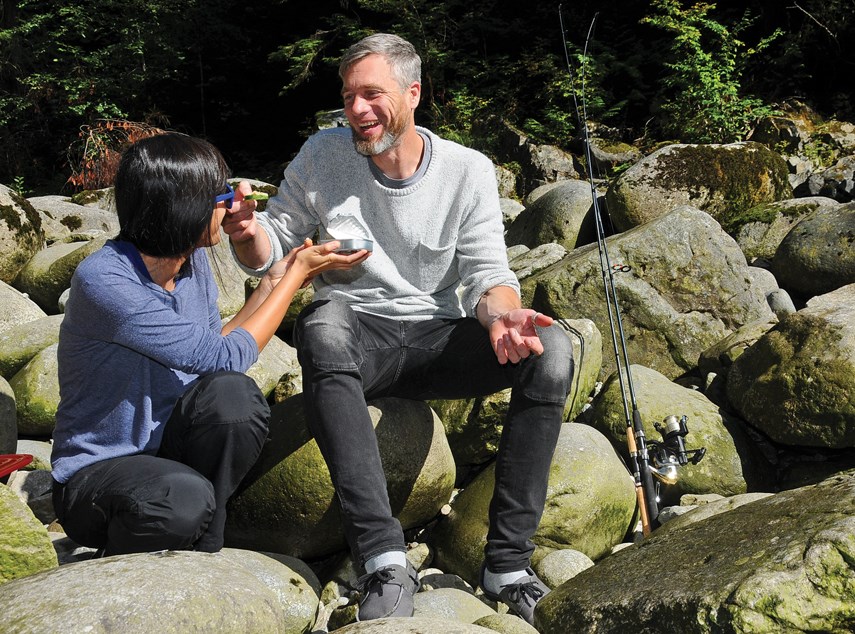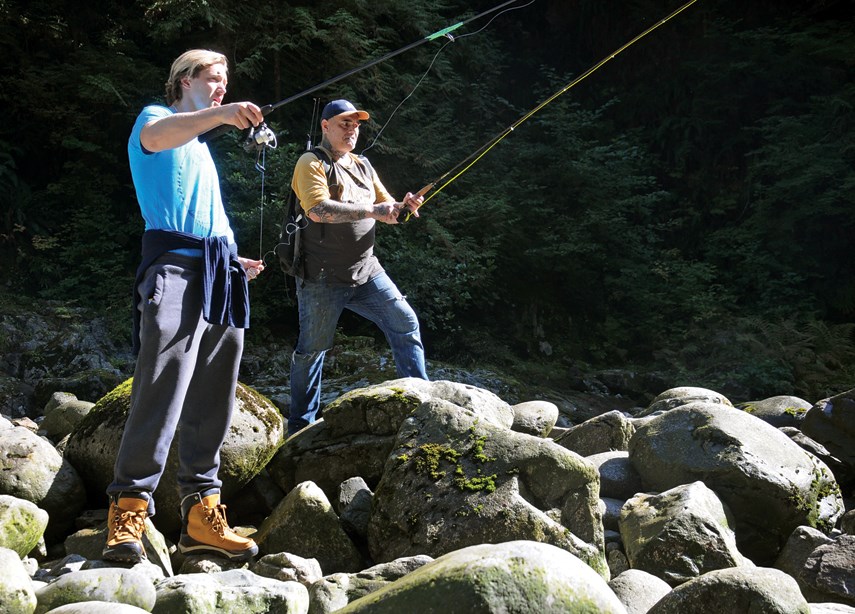They haven’t reeled in any fish yet – but that was never the point.
“Fishing’s just an excuse for a walk,” Alex Gibb explains from the banks of the Capilano River. “If you get a fish, then that’s bonus.”
Gibb is a patient and employee at the Pier Health Resource Centre pharmacy in the Downtown Eastside. He was also one of the first patients in the pharmacy’s injectable hydromorphone program. The program – which is only available at Pier – was designed to treat patients at the highest risk of overdose.
Gibb said he’d tried methadone and other treatments but struggled.
Speaking slowly and deliberately, Gibb describes the feeling of “impending doom, impending sickness,” that accompanied addiction.
“You’re constantly struggling to avoid going into crippling withdrawal,”
he says.
The way he avoided withdrawal was the way most addicts avoided withdrawal, he explains: getting more drugs.
Living that way wears you down, Gibb says.
“You lose perspective, you lose hope, and all of a sudden you’re living a life without any future,” he says.
In his last week of using Gibb says he overdosed four times.
“The strength of the dope out there, it’s terrifying,” he says, reflecting on the fentanyl crisis.
But as terrifying as the overdoses were, Gibb remained stuck in addiction’s cycle, he reflects.
“I got up and went out and got more drugs,” he says. “I have a great deal of shame around that.”
But the hydromorphone program changed his life.
Following his first treatments, Gibb says he was anxious.
“I felt like something bad was going to happen.”
But he quickly realized his anxiety was caused by being suddenly relieved of the stresses he’d grown accustomed to.
“What was going on was nothing was wrong,” he says. “(It had) been so long and so foreign that it was unnerving.”
Gibb credits the program for his new life.
“I don’t get high, I don’t have any withdrawal and I have my life back,” he says.
He’s working at the pharmacy now, helping other patients in the hydromorphone program.
Besides giving him a livelihood and helping him get off the streets, the job reaffirms his recovery, Gibb explains.
“I stay connected with my community,” he says. “And I’m able to help acquaintances.”
One of the ways he wanted to help was to get patients and pharmacists alike out of the Downtown Eastside’s towering grey and into the softer colours of nature.
The idea resonated with pharmacist Nicole Chiang, who brought the idea to Pier pharmacy founder Bobby Milroy.
Once a week, pharmacists and drug users embark on nature hikes, picnics and fishing trips, Milroy explains.
“It actually changed my life a little bit, too,” Milroy says. “I could kind of relate; just without the heroin part.”
In 2016, an Australian researcher found that people who spend at least 30 minutes in nature each week are less likely to have high blood pressure or to suffer from depression.

“You’re trying to work so hard just so you can keep living and within your arm’s reach is some of the best nature on Earth,” Milroy says. “Are we using it as much as we should? Probably not, and Alex reminded me of that.”
Many of the Pier patients have been more or less discarded by society, Milroy notes. But on their expeditions it was those patients leading the tour and showing the pharmacists how to fish.
The trips help create a sense of community, Gibb says.
“If something funny happens when you’re out for a walk and you have no one to share it with . . . it’s not really that funny,” he says.
Being together in the outdoors can dramatically change the dynamics of relationships, Milroy says.
In the pharmacy there’s an ongoing struggle to keep up with the numbers. Pharmacists are hard-pressed to find time to listen to patient’s stories and patients are hard-pressed to find time to tell them.
But on the banks of a river or on a forest trail, “they open up in a way that they may not in a clinical space,” Milroy says.
Many patients live with emotional pain and physical trauma, he notes.
“They self-medicate for pain,” he says. “They’re not having fun, that’s for sure.”
On one recent trip a patient talked about that pain, telling the pharmacists about the abuse they’d suffered.
“It was quite a powerful moment,” Milroy says.
It was only a moment, but as Gibb points out, those moments are important.
“When you look at them in perspective,” Gibb says, “the little things are massive.”



